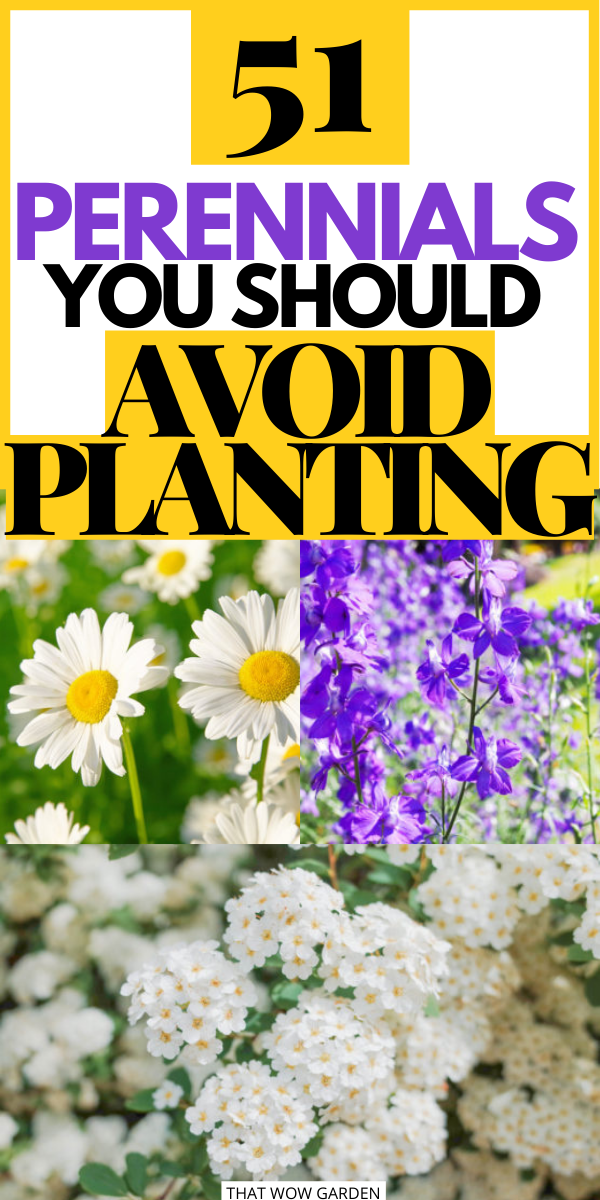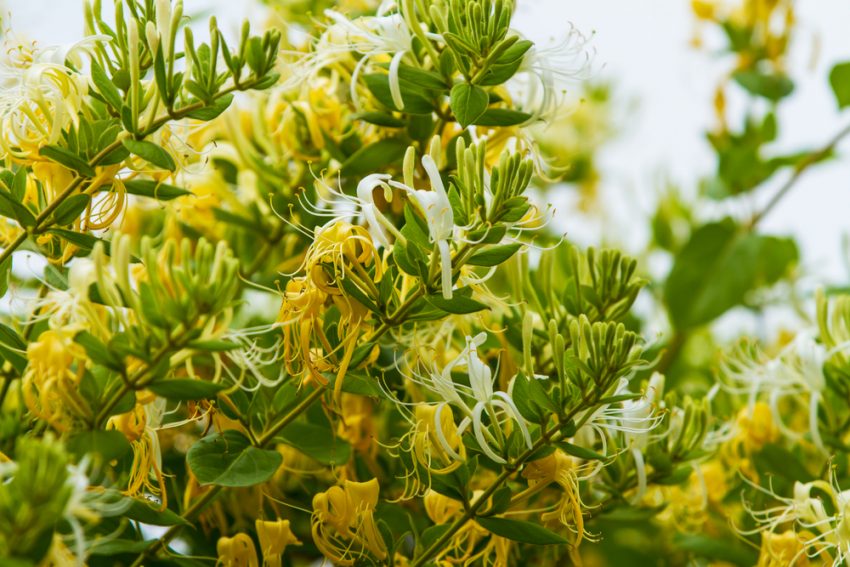Any Gardener would know how lovely it is to plant perennials in the garden. They bloom for years and require low maintenance. All you need to do is plant them once, and they’ll accompany you for long. But, there is always some ‘bad’ in every good thing.
There are some perennials that may seem innocent but can turn into a gardener’s worst nightmare! Indeed, they’d seem beautiful at first but would eventually make you feel regret for ever planting them. Why? As the term suggests, perennials are plants that grow ‘through the years’. Some of them initially look beautiful but will gradually spread over the lawn in such a way that it’ll be really difficult to get a hold of them. While others might be toxic and harmful.
But, the difficulty varies from garden to garden. For example, it will be troublesome to grow succulent only in a waterlogged rain garden whereas some others can’t be taken care of with ease under any condition.
So, if you’re planning to go for a perennial garden ( which you should) here is a list of perennials that you should avoid planting.
51 Perennials You Should Avoid Planting
1. Yarrow
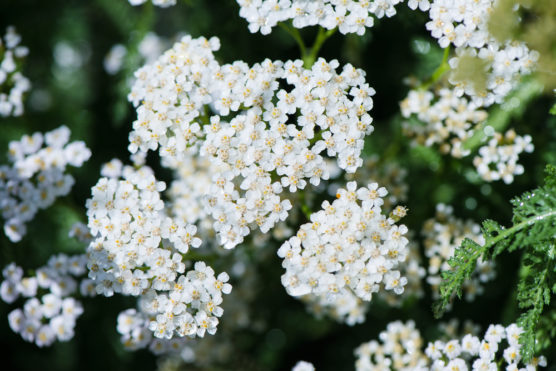
Scientifically known as Achillea millefolium, Yarrows belong to the Asteraceae family. It has showy flower heads, mostly white or yellow in color but can also be orange, red, or pink.
Being a herb, it is widely used for medicinal purposes but is certainly a bad idea to grow in your garden ‘cause it will spread out of your control. However, it looks beautiful in floral arrangements.
2. Belladonna
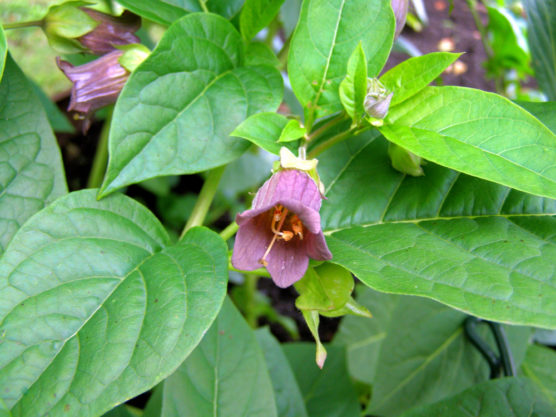
Atropa Belladonna, also known as ‘deadly nightshade’ is actually deadly. It is a poisonous herb with mostly violet-colored flowers, that belong to the Solanaceae plant family.
Although the roots and leaves are used for medicinal purposes, it is certainly a risky practice. Unless you don’t know how to exactly handle these, you must avoid growing them in your garden especially if you have pets or kids around.
3. Lily Of The Valley
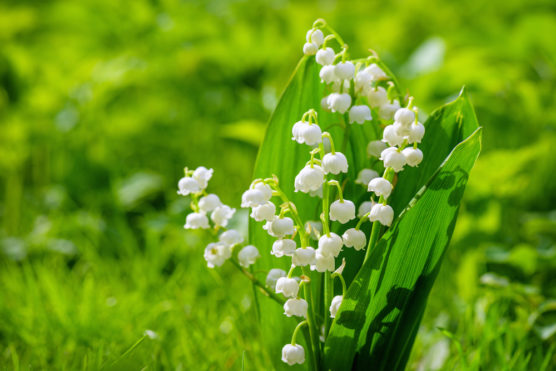
Convallaria majalis, a woodland flowering plant, is a member of the Asparagaceae family. These pendent-shaped white flowers bloom during spring and early summer but due to their poisonous nature, that is covered up by their sweet scent, it is highly recommended not to grow them in a house garden. In addition to that, they also spread all around and cause trouble.
4. Yucca
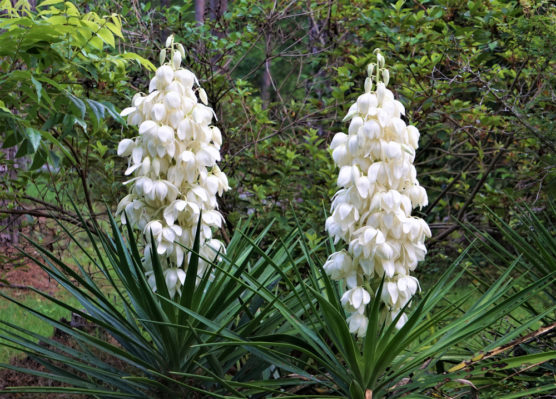
Like Lily of the valley, this too belongs to the Asparagaceae. Although, this beautiful, sword-shaped leaves with whitish flower is not at all poisonous but maintaining it is surely a hectic task. These are famous drought-tolerant that store the water in their trunks.
If you are prepared to constantly cut out the brown dry leaves from the lower portion of this plant, then you can go for it. But, why take the extra burden when there are plenty of other pretty, not troublesome perennials?
5. Tansy
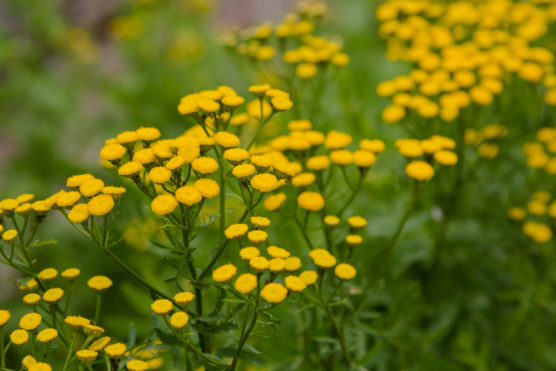
A herbaceous plant, Tanacetum vulgare, belongs to the aster family. Known for its button-like yellow flowers, it is also used for medicinal purposes. However, the oils contained in it are highly toxic ( so much that one must wear gloves when handling them).
You should not get enchanted by its mesmerizing appearance as it can literally be a killer. It is strictly recommended not to grow them, especially in house gardens.
6. Anemone
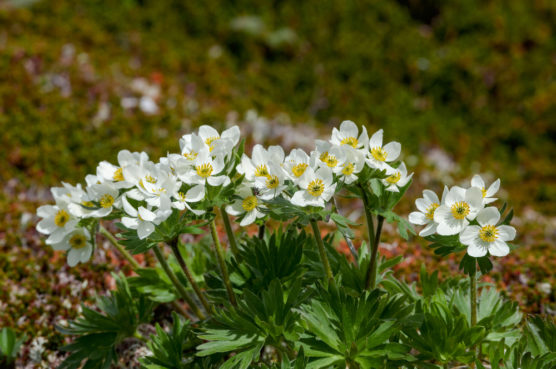
Anemonastrum, also called Windflowers, is a part of the Ranunculaceae family. It comes in varieties of colors like white, blue, red, or pink.
Not big trouble to grow them I must say, as they are pretty easy to plant but, if you wanna take the trouble to contain them as they keep growing, then you can decide to plant them. They are certainly beautiful and harmless but can bring you extra work. I’ll pass on them.
7. Veronicas
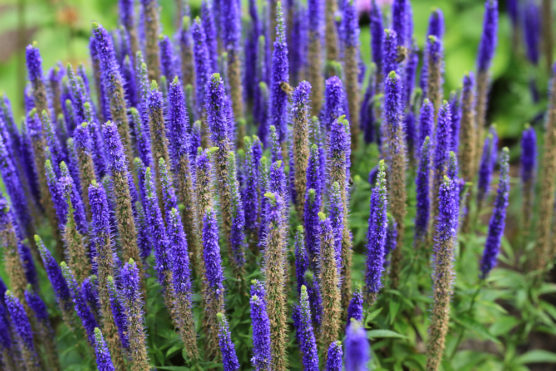
Veronicas, also known as Speedwell, is a member of the family Plantaginaceae. With its spike petals that come in varieties of colors like blue, purple, pink, or white, is undoubtedly an attractive perennial to grow ( easy growing and carefree indeed).
But, as the name suggests, it grows way too fast and covers up huge areas. As a result, it becomes difficult to contain but, if you are okay with that, then these will surely look great in your garden.
8. Chameleon Plant
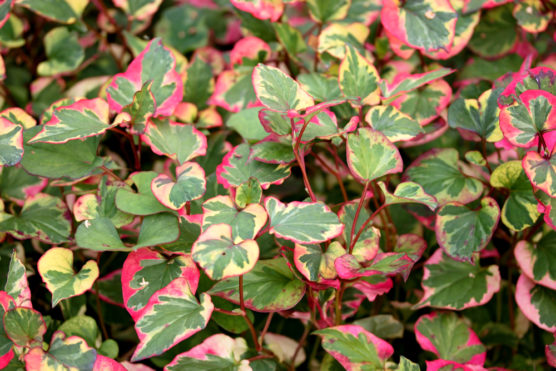
Houttuynia cordata is a perennial flowering plant, that belongs to the Saururaceae. It has heart-shaped leaves with a white and pink tinge- looks cute I know. But, after you plant it, it’ll grow at such a fast pace that it will spread all over your garden.
On top of that, the roots will sink deep into the grounds, making it almost impossible to get rid of them later. Even the herbicides don’t work in front of them. So, better not get misled by their appearances.
9. Aloe Vera
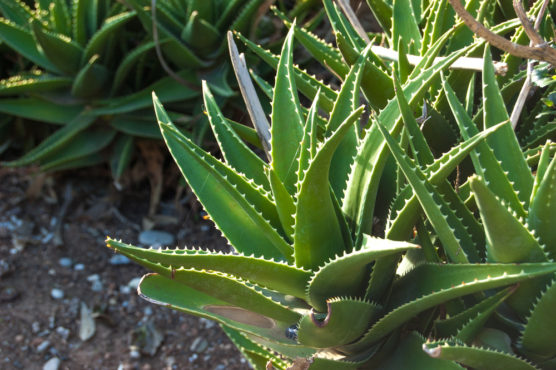
Aloe Vera is a succulent plant that belongs to the Asphodelaceae family. If you are aware of its large health benefits, you may consider planting on in your garden. There is no harm in it but the latex is toxic. If you got pets around, it might be risky as they may tend to chew them and will end up getting stomach upset and cramps.
10. Creeping Bellflower
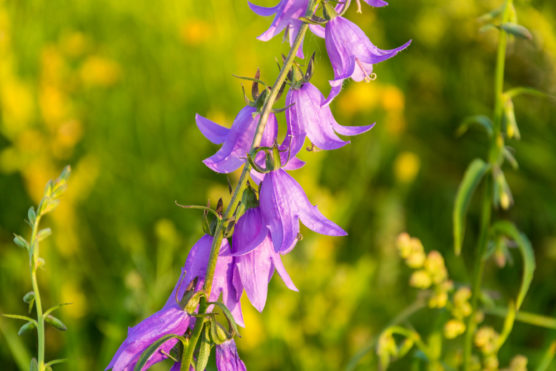
Campanula rapunculoides, a herbaceous plant, belongs to the Campanulaceae. The flowers are blue-violet in color, drooping down. As the name suggests, the roots of this plant creep into deep, narrow, and difficult-to-reach spaces.
It can creep into fences, lawns, and concrete, thus, making it exceptionally troubling, almost impossible, to control it. Most chemicals fail in front of it. So, it’s best to avoid growing such plants.
11. Clover
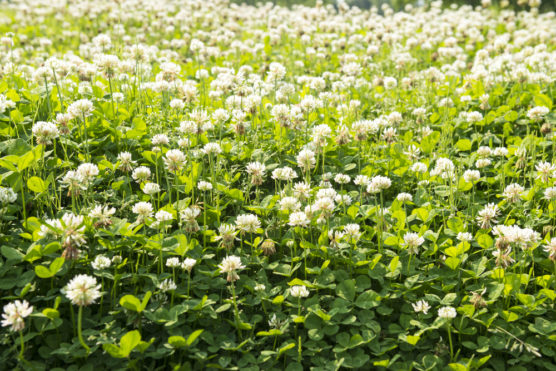
Clover or Trefoil is a member of the Fabaceae family. It has varieties but the most commonly planted are red clover and white clover. They are short-lived herbaceous perennial whose only problem is in maintenance.
If you had ever seen them, you probably saw them crowded in an area. You can get an idea of how much they spread even if they are short-lived. So, if you want a lawn covered with Clovers, then surely go for it otherwise don’t take the burden.
12. Irises
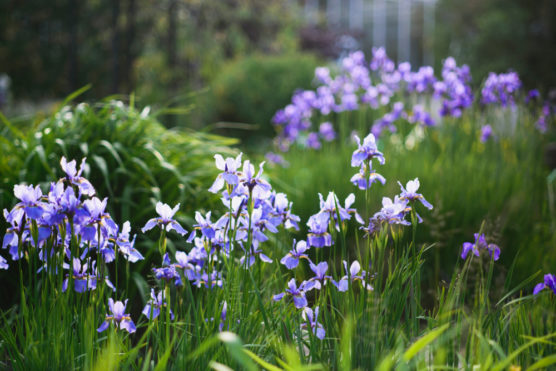
Irises or Iris, the term derived from the name of a Greek Goddess, is indeed a beautiful plant that belongs to the Iridaceae family. The color of the flower varies among different species but the most attractive one is the blue-violet flowered plant. However gorgeous it looks, the lasting period of its beauty is complaint ably short. Plus, it tends to spiral out of control if not divided regularly.
13. Crocosmia
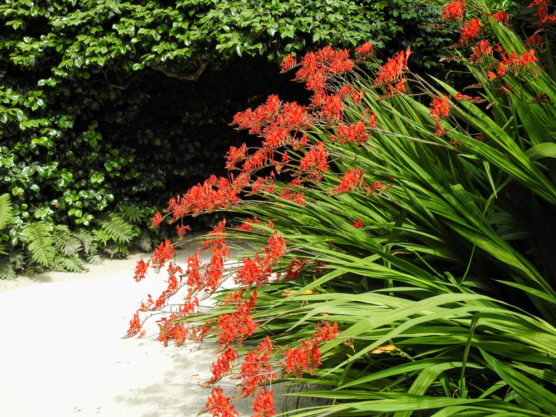
Montbretia or Crocosmia too belongs to the Iridaceae family, like Irises (you can guess where the problem lies). Growing sword-shaped leaves and scarlet, orange, or red flowers are not really worth the effort it requires for maintenance.
They bloom well, yeah, but there are many other perennials more interesting and easier to handle. They spread and take up so much space. And if you wanna get rid of them, it’s gonna take you a decade to pull them out from the very root. I’ll suggest you pass on them.
14. Japanese Honeysuckle
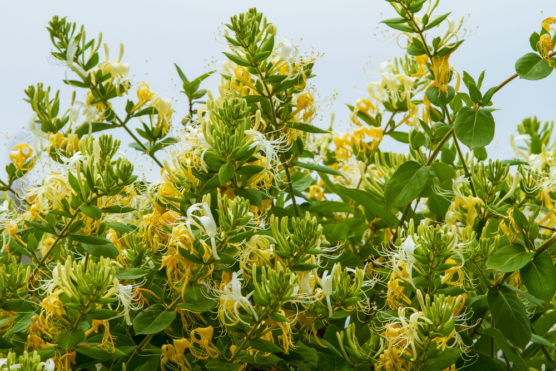
Lonicera japonica is an invasive species that belongs to the Caprifoliaceae Plantae. The flower is kinda double-tongued, mostly white or yellowish-white in color, and the smell when it blooms is wonderful.
Although it is used in traditional Chinese medicines, the contents except the nectar are pretty toxic for humans. If you decide to plant it even then, it will gradually spread out to strangle your other beautiful perennials. Not worthy in my opinion.
15. Wisteria
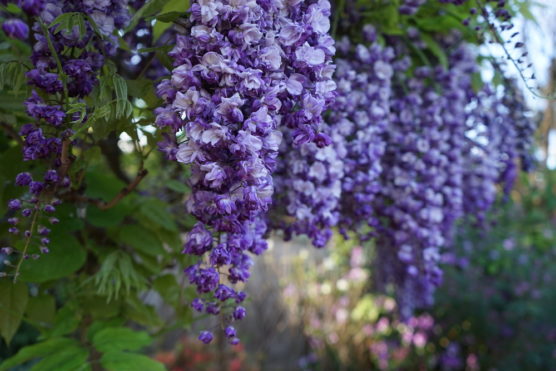
Wisteria, a part of the Papilionoideae family, is a long-living perennial, a vining plant, whose cascades vary from blue to purple. Looks like something that came out of a fairy tale, doesn’t it? Surely, you can fantasize about having such a plant upon your archway but the problem lies in its ‘’ever-growing nature.
After a few days of planting, you’ll find your fence all covered with it. Give it some time, and your garden won’t have any place to showcase other perennials. Getting rid of them is another nightmare. Grow them if you are ready to sacrifice a lot of your precious time on them.
16. Pampas Grass
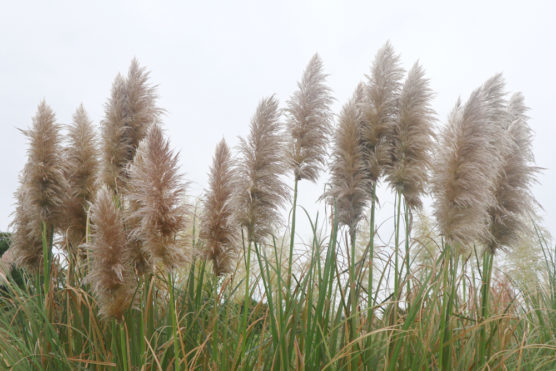
Cortaderia selloana or Pampas Grass, which belongs to the Poaceae family, is an ornamental grass that is pretty easy to grow. It self seeds so there isn’t much effort you need to put in growing it. But, that’s the problem actually.
The massive growth, if not constantly kept in check, will gradually dominate over all other perennials in your garden, hence, that is the only plant you will be left with. And if you decide to cut it out, well, good luck with its root system.
17. Mint
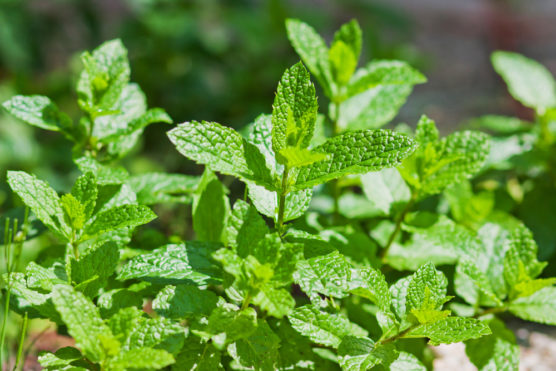
Mentha or Mint, a genus of plants in the Lamiaceae family, is widely known for its herbaceous benefits. Who wouldn’t want some medicinal plants in their garden? But, these herbs tend to grow all over too, thus, making it difficult to contain them. So, it is suggested to avoid growing them at all or, plant them in a pot to keep them from spreading all around. However, there is no guarantee that it won’t grow out of the pot.
18. Water Hyacinth
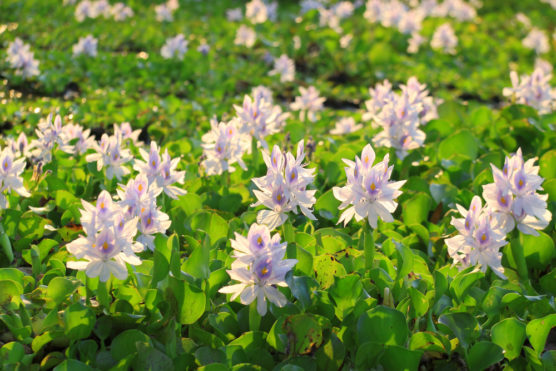
Eichhornia crassipes or Water hyacinth is an aquatic plant that belongs to the Pontederiaceae family of the Plantae. It is a free-floating perennial that grows oval-shaped, glossy violet flowers. Because of its invasive nature, it can choke other plants in your garden.
As it is a floating plant, it can also choke fishes that come in contact with it. If you wanna grow flowers on your lake, then it’s better to go for non-perennials.
19. Buck’s Beard
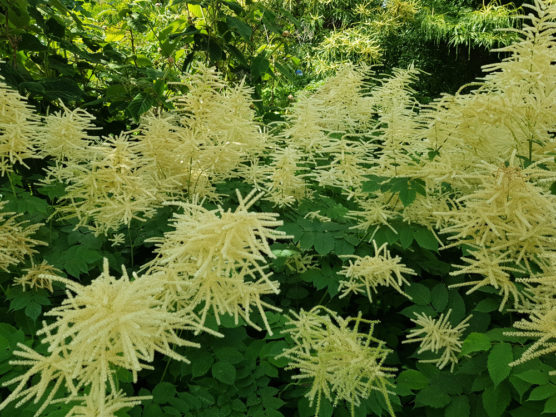
Aruncus dioicus, also known as Goatsbeard, is a perennial forb that belongs to the Rosaceae family. It grows white or cream-colored feathery plumes and so can be confused with Dandelion, but, of course, there’s a difference. Buck’s Beard grows bigger seeds in comparison.
Later, in the form of a mini parachute, the seeds are spread all around for further growth. That’s the problem. They might spread so much that it’ll become difficult for you to get rid of them. While it might be fun to blow the plumes away but it may not be worth the effort.
20. Chinese Lanterns
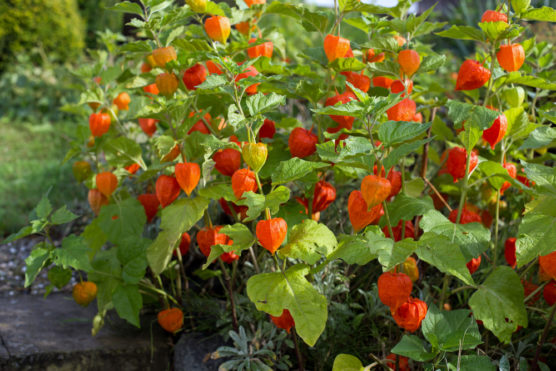
Scientifically known as Physalis alkekengi, this unique perennial belongs to the Solanaceae family. The term ‘lantern’ refers to the inflated pumpkin-orange seed pods as they resemble a paper lantern.
Honestly, I’d love to grow them though they spread all over. But the problem lies in their roots. The roots go so deep and become hard that only chemicals are the way to get rid of them. Do you wanna take the trouble? I don’t.
21. Purple Loosestrife
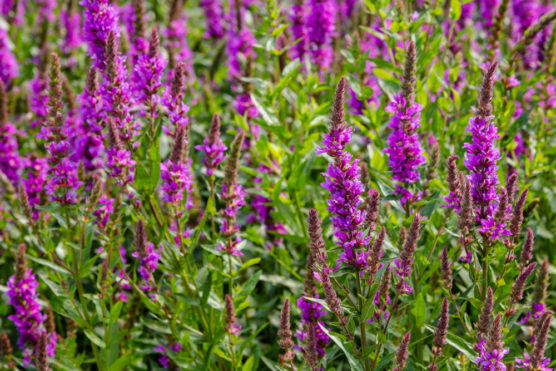
Unlike other loosestrifes, Lythrum salicaria is a member of the Lythraceae family. As it is in the name, it grows purple-colored stalks of flowers and usually grows nearby water bodies. This beautiful but noxious weed can choke out wetlands, and crowds all around.
The shoots can even kill other plants. Because of its invasive nature, it is even banned from sale in some states. If you live in one of such state, then you already know why it’s on the list. Even if you don’t, it’s better to stay away from them.
22. Fishpole Bamboo
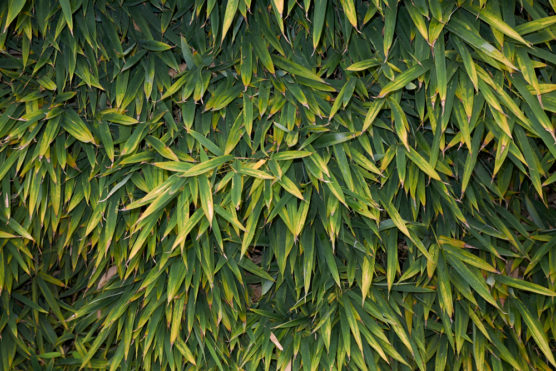
The Fishpole Bamboo, scientifically known as Phyllostachys aurea, is a species of bamboo and also belongs to the Poaceae family. This evergreen perennial is distinguished from the other bamboos by its compressed internodes in the lower region that have a shell-like appearance and they are often shown off.
But, it is certainly not a good idea to plant them in a perennial garden. Unless you are in a bamboo plantation work, it’s best to not grow them as they’ll become huge and take all over. Getting rid of them from the root is another issue.
23. Ostrich Fern
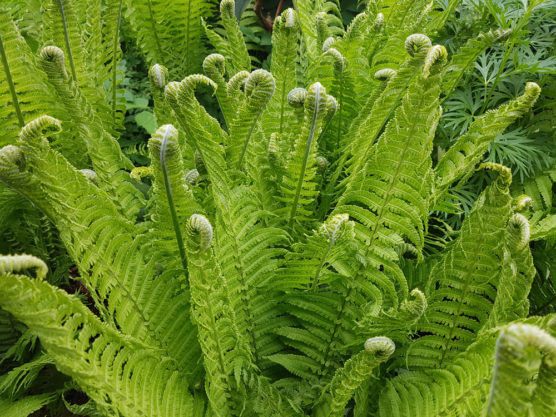
Matteuccia struthiopteris, commonly known as Ostrich Fern, is of the Onocleaceae family. The deciduous green leaves are collected in such a manner that they resemble ostrich plumes and thus the name Ostrich Fern. They’re beautiful but not for gardens. Being invasive, they spread all around by underground runners. If you have a big empty spot where you aren’t going to plant anything else, then you can plant these there otherwise it’s best not to take the pain of containing them.
24. Obedient Plant
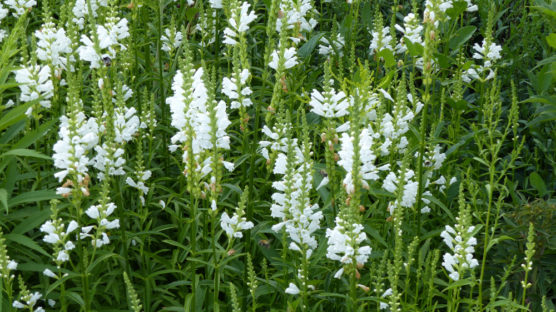
Obedient Plant or False Dragonhead, Scientifically known as Physostegia virginiana, is a beautiful flowering plant that belongs to the mint family i.e. Lamiaceae. It grows bright, spiky flowers that range from pink to violet.
Unfortunately, the term ‘obedient’ is only ‘cause of its flexibility ( it can be bent in different ways), and in the case of gardens, ‘disobedient’ is the correct term. These spread around so much by underground rhizomes that you’ll end up smacking your head. Better be away from ‘em.
25. Great Blue Lobelia
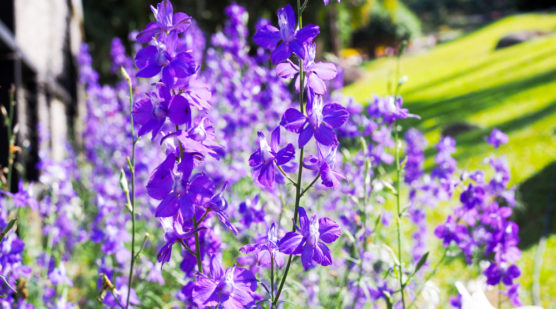
Blue Cardinal Flower ( Lobelia siphilitica), of the Campanulaceae family, is desired the most for woodlands. This bright blue colored, breathtaking plant, is a herb and has medicinal benefits.
While it’s blooming for a few weeks, it seems pretty incredible but the part that comes after is a mess. It spreads around so much by seeds that you will feel regret to ever plant them. A Wild prairie is the most suitable place for it. Certainly not house gardens.
26. Castor Bean
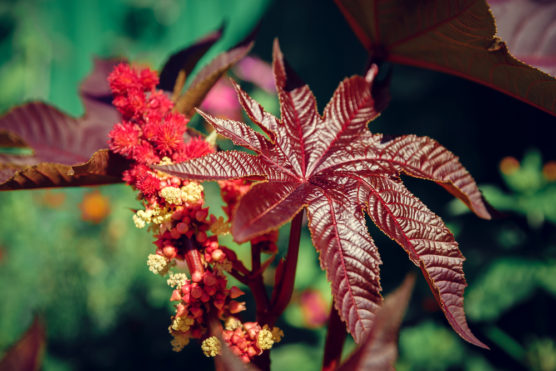
The Castor Oil Plant or Ricinus communis is a flowering plant that belongs to the Euphorbiaceae (spurge) family. It is a fast-growing herbaceous perennial that can grow up to 40 feet high.
With its big leaves and clustered flowers, it sure looks good but is no less than poison. Almost all parts of it are poisonous, the most being the seeds. Not at all suitable for house gardens, especially ones with pets or kids in them.
27. Bradford Pear
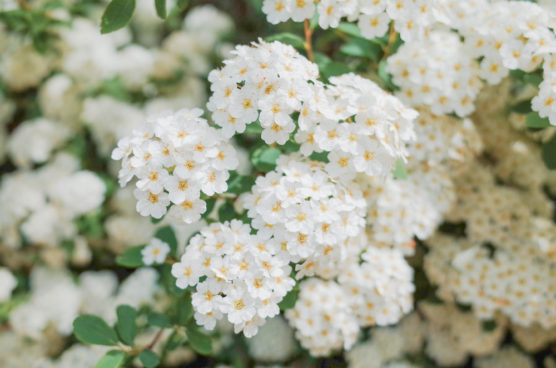
Also known as Callery Pear, botanically known as Pyrus calleryana, is a member of the Rosaceae family. This spring-flowering tree with beautiful white flowers is one that looks mesmerizing when it is blooming but later, will turn out to be the one people hate.
The worst is how the flowers smell ( pretty unpleasant) and its wood is so weak that it can’t withstand storms and heavy winds. People in suburbs do plant it but I’ll suggest not to go for it in case of house gardens.
28. Euphorbia
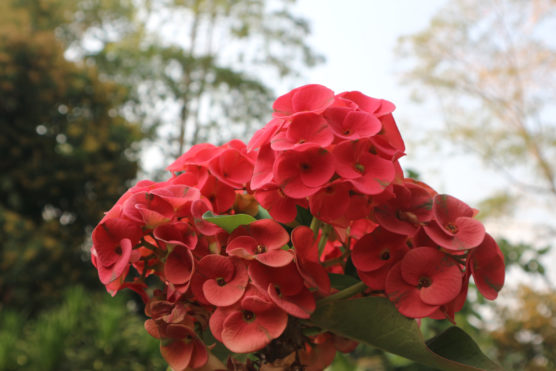
Commonly called Spurge, Euphorbia, a genus of different species belongs to the Euphorbiaceae family. The unique feature is that the flowers have no petals, sepals, or nectar for attracting pollinators, however, they can still reproduce. Beautiful as it seems, they also produce a poisonous milky latex.
So, if you have decided to plant a perennial garden nearby pets and children, and are thinking of growing these, better think twice or rather pass on these. Why take the risk, right?
29. Japanese Barberry
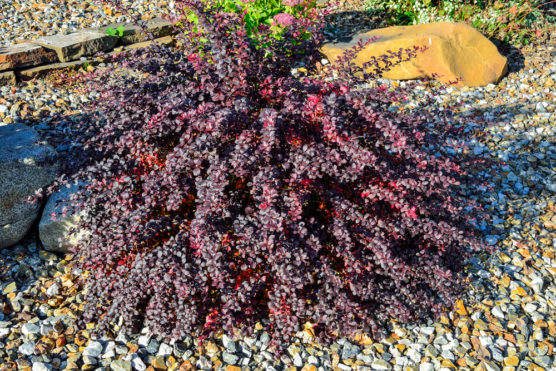
A flowering plant of the family Berberidaceae, Berberis thunbergii, is a woody shrub that has curvy branches with multiple, sharp spines. The leaves are small and the cultivars can be gold, maroon, chartreuse, or green. Despite its beauty, it’s pretty invasive.
The barberry is likely to spread not just in your yard but beyond the boundaries of it. On top of that, it can even spread Lyme disease. Now you understand why not to plant them? But if you got an unbelievably huge area, without any intention to grow other plants, then cheerfully go for it.
30. Amaranths
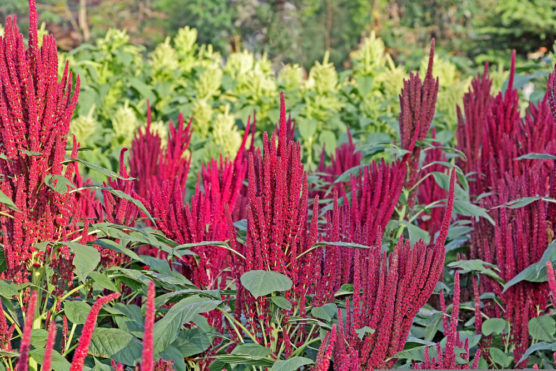
Also known as Pigweeds, these summer annual weeds are a part of the Amaranthaceae family. The long, reddish, spine-like tassel flowers are undoubtedly an eye-catcher. Despite its mystical appearance, it is not a good idea to grow them in your yard. Because of them being a top pollen producer, they can easily worsen a person’s allergic conditions.
Even if you don’t have someone around with any allergies, people with it may visit your garden and you’ll end up being responsible for their miserable condition. No use in doing bad.
31. Daisies
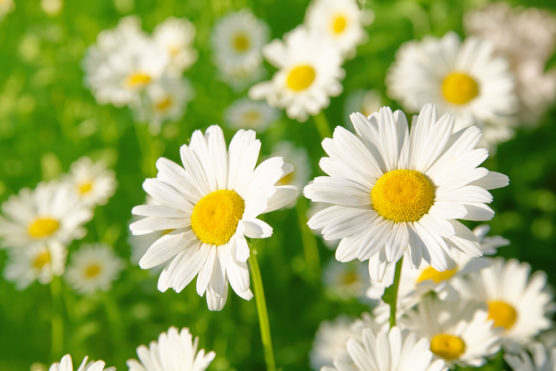
One of the most common plants, Daisies (Bellis perennis) is a member of the Asteraceae family. Most people desire to plant these beautiful white flowers with yellow center perennial but they aren’t aware of its uncontrollable nature. After a few years, they will spread so much that you won’t be able to contain them. If your desire is strong enough to put the effort that will be needed to control them, then your garden will look fantastic with these white beauties. Otherwise, just pass.
32. Plantain Lily
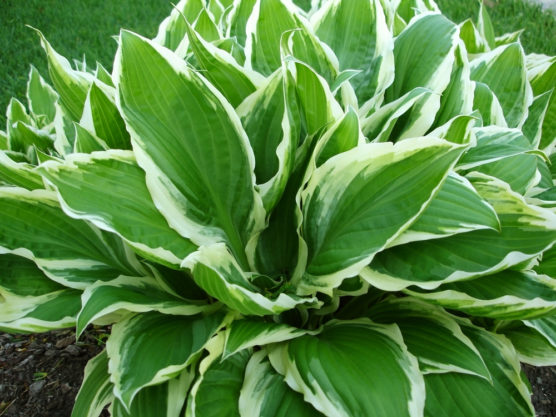
Plantain Lily, also called Royal Standard Hosta, belongs to the Asparagaceae family. These are fast-growing perennials having heart-shaped green leaves with lavender colored buds that have a pleasant fragrance. Although they can grow up to as much as 25” but the width they can spread over is double its height and that’s the problem.
The only reason you should think twice before planting this species of Hosta is their ‘spreading nature’. Give it a few years and see for yourself if you don’t believe me.
33. Hops
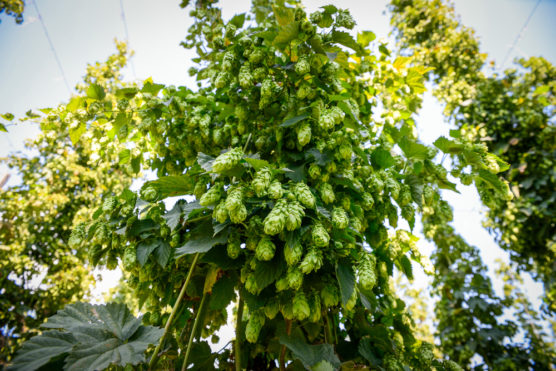
The Common Hop ( Humulus lupulus) is a flowering plant of the family Cannabaceae. It is a herbaceous plant, grows cone-like flowers, that is used for multiple purposes in beers. Also, it is a vigorous climber and that’s the problem.
The ferocity of its growth is quite troubling (It can reach as high as your antenna in a few years!). Unless you got a garden assigned to only Hops, think twice before planting these.
34. Oregano
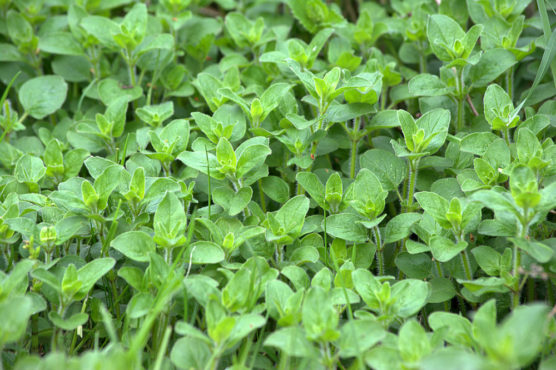
A flowering plant of the mint family Lamiaceae, Oregano or Bellis perennis is a perennial herbaceous plant. The growth isn’t much, some centimeters, the purple, spike flowers being millimeters in height. Pizza is the first thing that came into my mind when I read its name. As good as it tastes on Pizza, an Oregano plant can be hard to dig out and also takes over the ground. If you are planning to grow different types of perennials in one garden, Oregano should not be on that list.
35. Ivy
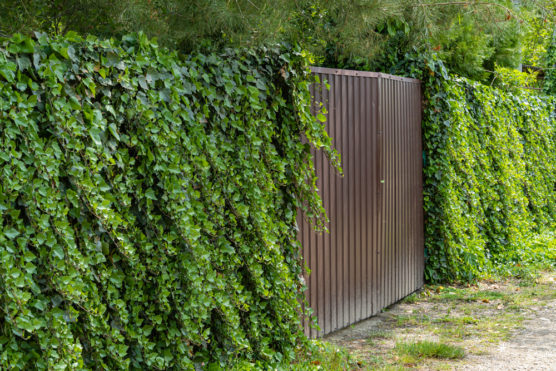
Ivy or Hedera, a member of the Araliaceae family, is an ever-climber or ground-creeper perennial. No flower is produced by it and thus seems all green and good. But, because of its massive growth and invasive nature, it is surely not recommended for house gardens.
You can think of growing Ivy if you are looking for a lot of greenery around the house but it’ll be mighty trouble to contain them. Hence, your place may end up looking more messy than beautiful.
36. Gooseneck Loosestrife

Like the purple loosestrife, Lysimachia clethroides is a flowering plant that belongs to the family Primulaceae. This too grows stalk of flowers which are white in color and of course, have an invasive nature.
They spread massively by underground stems and can become an excellent groundcover. But, unless you are looking for a Gooseneck garden only, surely it’ll be anything but ‘excellent’ for you. Avoid both the loosestrifes.
37. Primrose
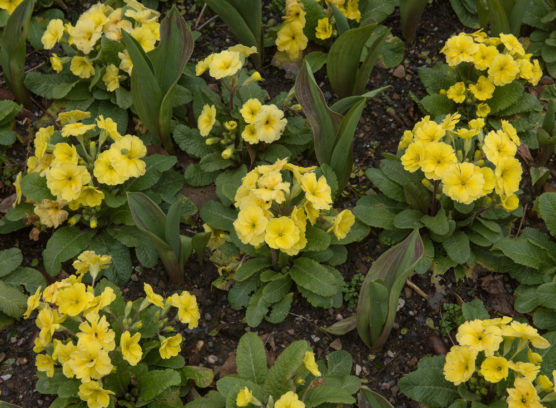
Botanically called Primula vulgaris, is a flowering plant that belongs to the Primulaceae family. The flowers are mostly yellow but can also be pink or white. The difficulty is with the hardy yellow ones. They spread rapidly by self-seeding. If you try to dig them out, they are stubborn enough to defy you and grow further. People often complained about its invasive nature and how irritating it can get despite its sunshine beauty.
38. Snow-on-the-mountain
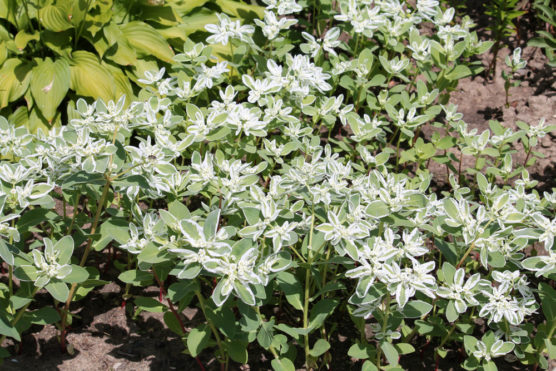
A succulent plant of the Spurge family Euphorbiaceae, Euphorbia marginata is definitely a snow beauty. The white flowers that resemble snow, the leaves are small and can vary from light green to entirely white. However beautiful it might seem, it is anything but harmless.
Almost every part of it is poisonous, even after it dries it retains the poison. A pet or kid isn’t safe around such perennials. It acts as a groundcover so you can guess its spreading nature.
39. Reed Canary Grass
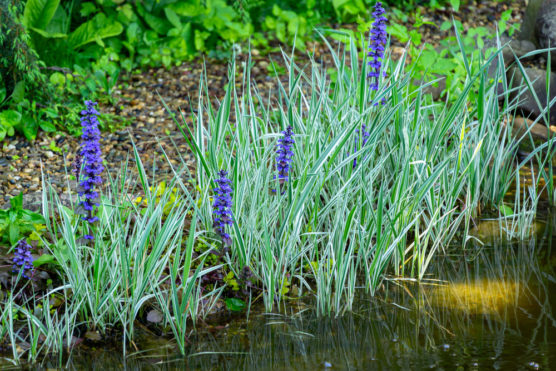
Commonly known as Ribbon Grass, Phalaris arundinacea is an ornamental perennial grass. It can grow up to be pretty dense with narrow foliages that will end up being trouble. Planting these in your garden with other grasses is certainly not a good idea. Give it some time and it’ll take over all other grasses, maybe some short plants too. Unless you are truly a fan of such a type of grass and have a huge spot designated to it, I’ll suggest give it a NO.
40. Prickly Pear
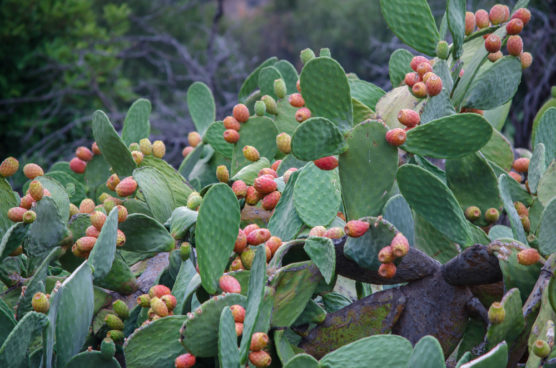
Opuntia is a genus of the cactus family, Cactaceae. These have flat stems with spiny cacti and grow edible red fruits. No matter how cute it seems, they have a bad reputation in some places ‘cause of their invasive nature. Except in very cold places, as it cannot grow much at such low temperature, will make a good plant-pot. Unless you are a resident of such a place, refuse to grow it.
41. Columbine
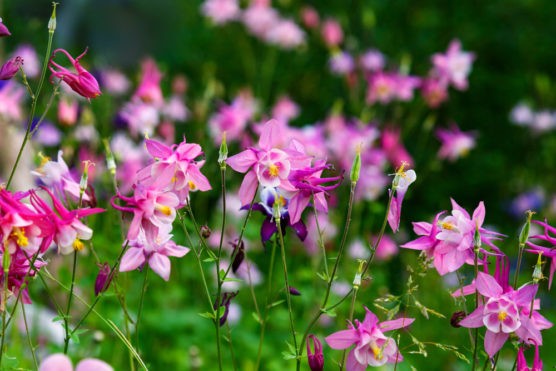
Of the family Ranunculaceae, Aquilegia is a perennial flowering plant. It is known for the spurred petals of its flowers and how it emerges from dark green foliage and turns into maroon color. Pretty easy to grow indeed but as it is a self-seeder it can grow massively in warmer climates.
Cold temperature restricts the growth to a certain extent so that won’t be a problem then but if you belong to a hot climatic region, better not go for it.
42. Coneflowers
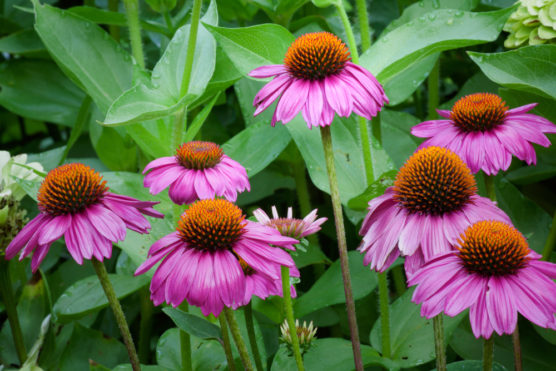
Rudbeckia or Coneflowers is a plant genus in the Asteraceae family. Also known as black-eyed-Susans because of its colorful flowers with a prominent, raised, black, or brown disc in the center of each. Again, no matter its beauty and uniqueness, there is a problem with its spreading nature. It can take over your other plants in the garden. Despite that, it stands as a good welcoming host for summer.
43. Wolf’s Bane
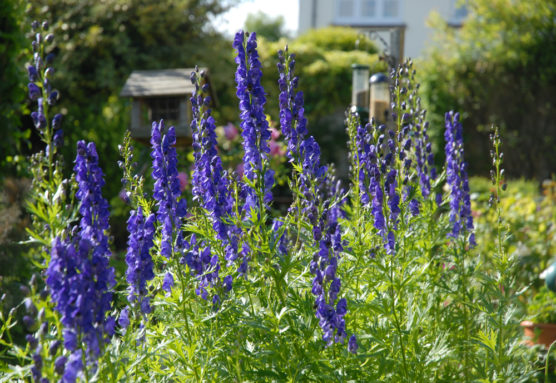
Also known as Monkshood, Aconitum is a perennial flowering plant that belongs to the Ranunculaceae family. An ornamental plant that grows attractive flowers varying from blue to purple. Beautiful, yeah, but toxic too, especially the roots.
Every part of it is poisonous. If that’s not enough to make you understand, then you should know that it is also known as ‘Queen of Poisons’. Now you get it? Highly recommended not to grow in house gardens.
44. Greek Valerian
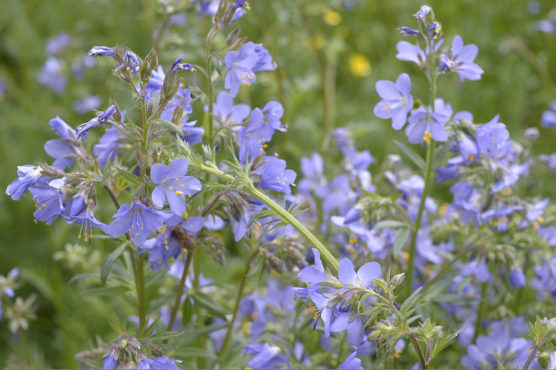
Also called Jacob’s Ladder, Polemonium caeruleum is a hardy flowering perennial belonging to the Polemoniaceae family. The flowers are sharp, lavender to white-colored with tiny leaflets. Apart from beauty, it seems to be, it is a massive self-seeder. How far it can spread! If you are enchanted by its beauty, get a huge empty spot for growing it. Else, avoid.\
45. Hollyhocks
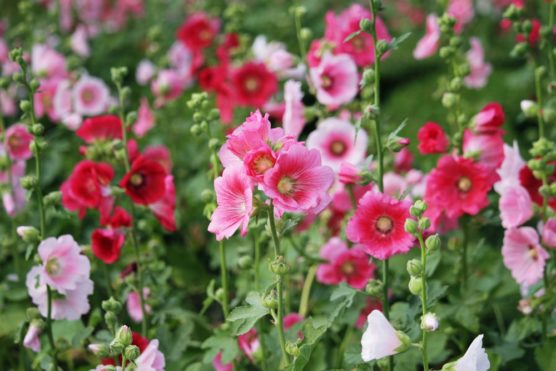
Alcea is a flowering plant in the mallow family, Malvaceae. They grow notched petals that are of different colors like pink, red, white. To grow them, there are many conditions which you have to follow.
That’s quite hectic. But the problem, again, is in its spreading nature. If you can control it, well and good, but if you can’t somehow, you’ll be in big trouble. These are hardy plants so getting rid of them can be troublesome as well.
46. Dahlias
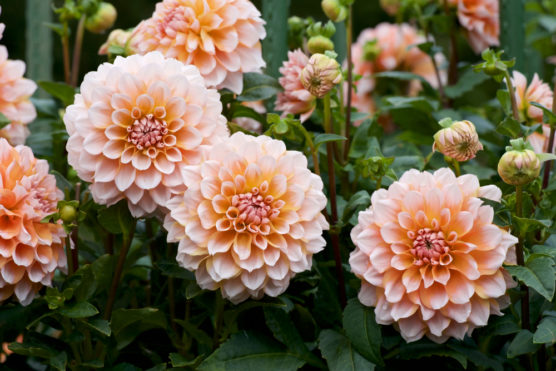
Of the Asteraceae family like daisies, it is a genus of bushy, tuberous, herbs. This plant grows flowers with central disc-like other members of the family, and that looks splendid, to be honest, but, like daisies, they too spread all over.
After some time, you’ll find your garden all covered with it if not taken proper measure to contain it. Although, beauty might be worth the trouble and effort.
47. Calla lily
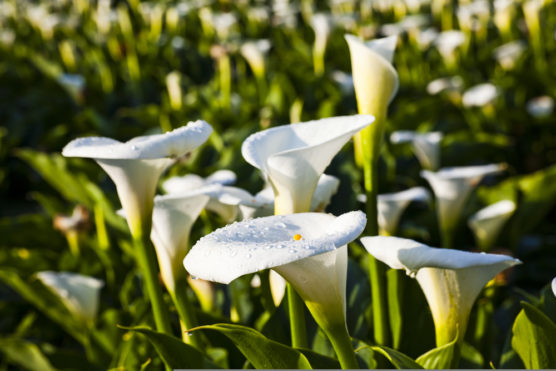
Zantedeschia or Calla Lily is a genus of eight species of the Araceae family. The flowers are funnel-like in shape and grow in a range of sensuous colors like white, pink, orange, purple, etc. It will look amazing in bouquets and other floral arrangements, and as pot plants too, but, in the case of gardens, it may become dominant over all other perennials.
Speaking more easily, it won’t be a good idea to mix it with other perennials. Alone, it will work its charm well but if not contained properly, it is going to be trouble.
48. Poppy
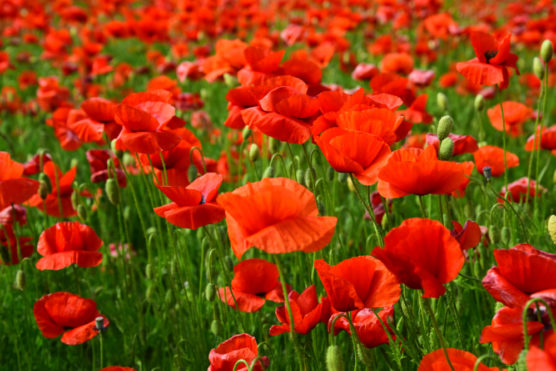
This herbaceous plant belongs to the Papaveraceae family and is known for its colorful flowers. The name sounds fun, isn’t it? It is referred to as the bright colored flowers they grow. Often they are used in narcotic drugs. Yup. In some places, it is even illegal to grow.
So, better avoid it if you live in such a place. If not, then you should know that people do plant them for their appearance but they can spread all over too.
49. Spotted dead-nettles
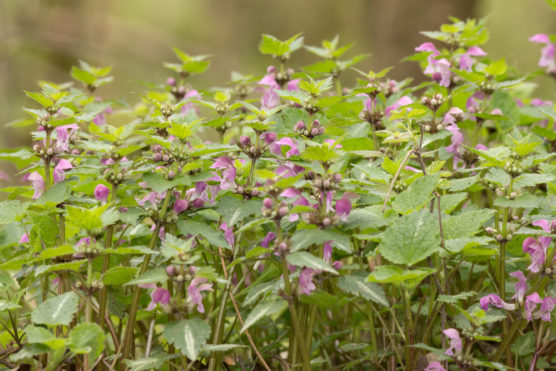
Lamium maculatum is a part of the Lamiaceae family. Growing small, purple flowers with a tremendous amount of leaves, it is perfect for a perennial groundcover. But if that’s not your motive, then you should not go for it. Being a speedy spreader, you’ll end up in trouble after some time.
It can even dominate other plants in that garden. If you have some kind of precautionary measures in your head and are sure about being able to contain it, who stopped you then?
50. Feverfew
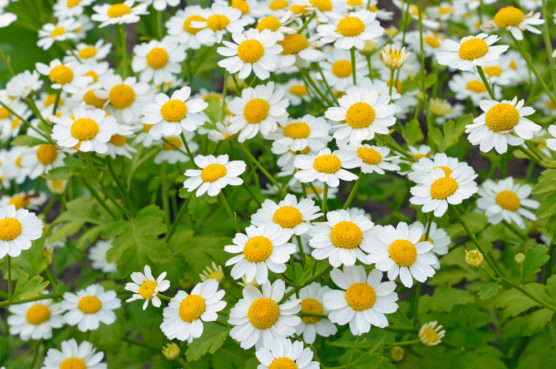
Tanacetum parthenium or Feverfew, is a flowering plant of the daisy family, Asteraceae. In fact, they are a lot similar to daisies in appearance, hence, they too are invasive.
Evident by the picture, it grows far and wide and makes it difficult for the gardener to contain it. It might seem like I’m suggesting you avoid all types of Asteraceae plants but that’s not true. The family is huge and there are many other perennials of a similar type you can grow. Why go for the troubling ones?
51. Four o’clock
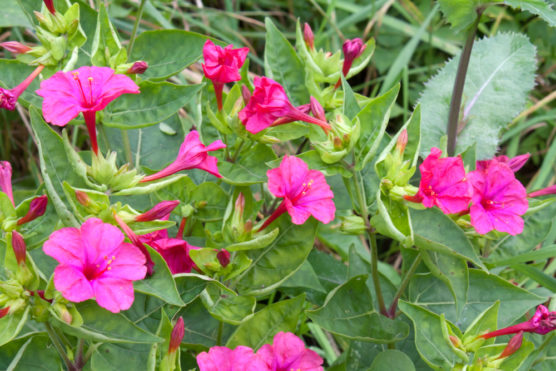
Also known as Mirabilis jalapa, Four o’clock belong to the Nyctaginaceae family. It is a bushy flowering plant that grows from midsummer till frost. The flowers resemble Chrysanthemum to some extent and the color ranges from white to pink to purple. It is beautiful without any doubt but can grow up to be a huge mess. Grow as a pot plant but not free in a garden. It is pretty hard to contain them.
Now we end with the list of plants that you should avoid planting. Every plant is beautiful in its own way. So, you’ve to choose based on other stuff like its nature, the soil you have, climatic conditions, etc. Each family of plants has different species so you got plenty of options to choose from instead of taking the headache of the invasive and poisonous plants.

